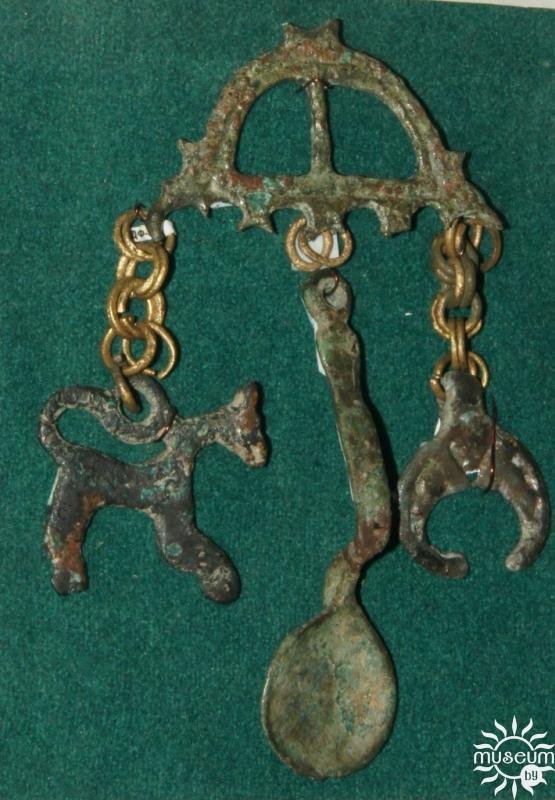One of the directions of ancient pottery production was manufacture of plinth – bricks of a special form. Plinth was in demand due to active temple construction in Polotsk in the 11th-12th centuries. Translated from Greek, plinthos is a wide flat fired brick. Initially, the plinth was square, later rectangular in shape and only 4-5 cm thick. The recipe for its creation was brought to Polotsk by Byzantine craftsmen. The terracotta brick plinth was made of local red clay, molded in special forms with a wooden bottom, then dried in the open air. The final stage of processing was firing in special outdoor clay furnaces, which were located in the hillside.
On a plinth you can often find fingerprints, prints from sharp objects, stamps, as well as embossed signs, which could be either random prints or special stamps for marking products by local craftsmen. It is remarkable for Polotsk plinth that the signs were mainly placed on the sides (the smaller surface of the brick). For the first time on the territory of modern Belarus, the plinth was used in the 11th century during the construction of St. Sophia Cathedral. A piece of these building material, found in the western part of St. Sophia Cathedral, is on display at the Museum of Local Lore. It was found during the archaeological excavations carried out by the director of Polotsk Historical and Archaeological Reserve Yadviga Afanasyevna Zaitseva in 1979.
In the second half of the 13th century in Belarus plinth was replaced by large squared brick.

